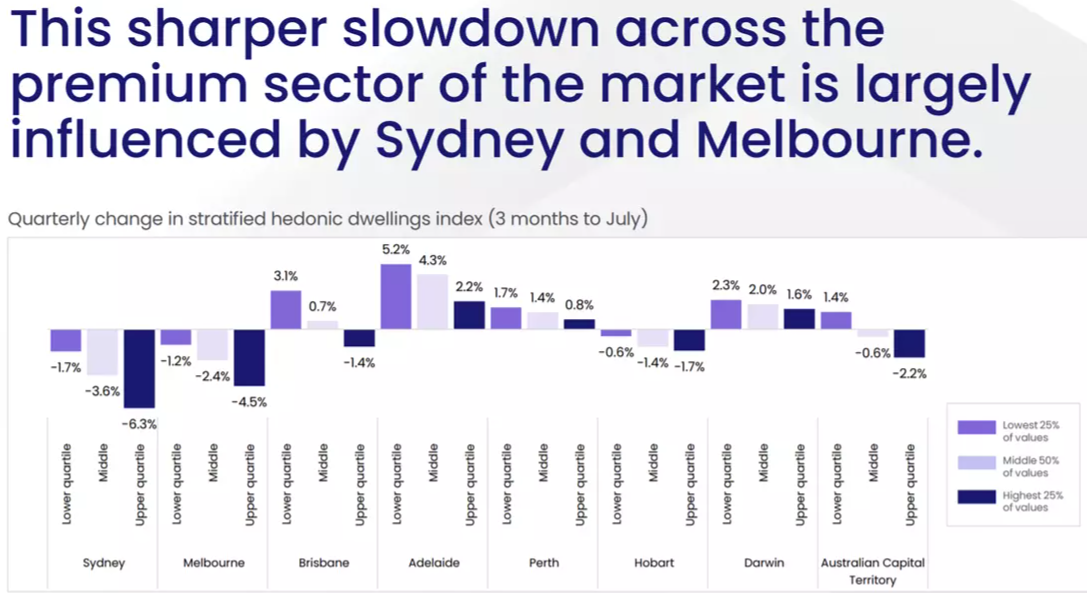PropTrack’s automated valuation model (AVM) data, reported in News.com.au, shows more than 300 suburbs across Australia experienced six-figure price declines over the July quarter.
A dozen suburbs have also experienced prices falls of more than $500,000 since March. These include wealthy suburbs across parts of Sydney’s northern beaches and eastern suburbs, Melbourne’s Mornington Peninsula, as well as inner-city Perth and Canberra.
Suburbs that have suffered the biggest price falls are:
- Point Piper: unit values down $715,000 (-15%)
- Manly – house values down $680,000 (-14%)
- Ingleside – house values down $610,000 (-18%)
- Flinders – house values down $600,000 (19%)
Other suburbs where house prices fell by more than $500,000 include Clontarf, Dover Heights, North Bondi, Bronte, Rose Bay and Bondi Beach in Sydney, Peppermint Grove in Perth and Griffith in Canberra.
Commenting on the results, PropTrack senior economist Eleanor Creagh noted:
“Price falls are largely being led by the ‘high end’ of the market and higher value suburbs”…
“It’s often the case that the upper end of the market experiences larger price declines, and at the moment it’s the suburbs that are home to more expensive properties that are seeing bigger price falls than more affordable properties”.
PropTrack’s findings are supported by CoreLogic’s data, which shows that the premium end of the housing market (i.e. the top 25% of suburbs by value) experienced the sharpest price falls over the July quarter:

Premium end leads house price declines.
As noted by Chris Joye from Coolabah Capital, the premium end “is much more illiquid, highly pro-cyclical, and tends to be significantly more volatile than the mass market. It is also typically much more sensitive to big shifts in financial markets, which means that it normally leads the cheaper segments”. Accordingly, “the luxury housing market is getting smashed a lot harder than less expensive sectors… In every market, the most expensive areas are materially underperforming less expensive homes”.
This pattern of premium properties under-performing during downturns and out-performing during upswings has been evident over previous cycles.
Premium properties are by definition smaller in number and have a smaller pool of potential buyers. Therefore, they generally display greater volatility than properties at the more affordable and middle ends of the market. They experience bigger booms and bigger busts.

